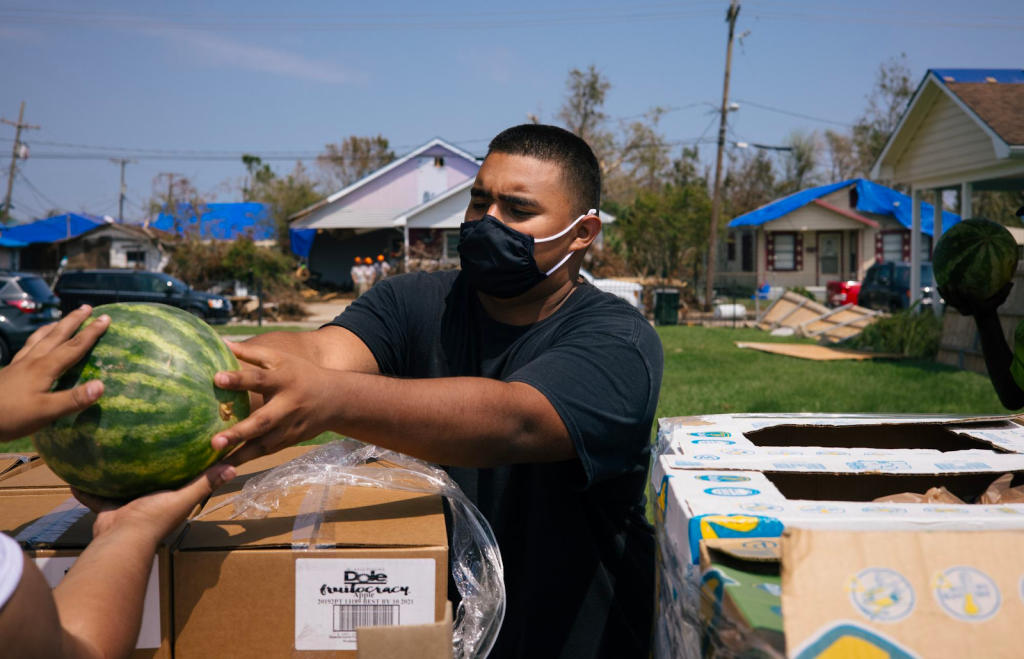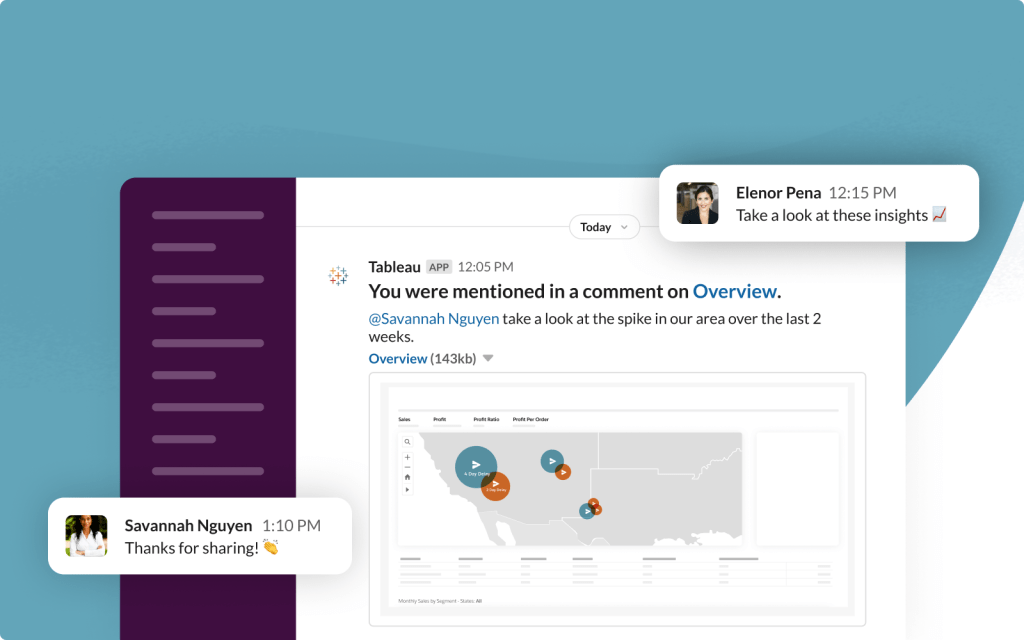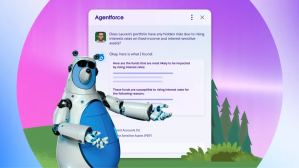Got data?
Everyone does. In 2021, it’s estimated the world produced 79 zettabytes of information, otherwise known as data. That’s 1,000,000,000,000,000,000,000 bytes, 79 times. In every hour that passed in 2021, the world made more bytes of data than grains of sand on Earth.
The problem now isn’t gathering data. It’s how to make sense of it.
It’s that very challenge that Mark Nelson, President & CEO of Tableau at Salesforce, is on a mission to solve. “Just having data, even lots of data, isn’t the key to success,” he explained. “You have to know how to ask questions about your data, how to dig deeper, and how to turn the insights you’re seeing into action.”

Today, Nelson will take center stage at Tableau Conference in Las Vegas to share the latest news and innovations from Tableau, including Tableau Cloud, the next iteration of Salesforce’s cloud solution for analytics. Says Nelson: “I’m excited because this is the fastest way for people to get started and immediately get value out of analytics.”
Here, Nelson shares his thoughts on what’s fueling the need for data right now, and offers insight on how Salesforce and Tableau are the sweet and salty, yin and yang, best combo since the invention of Reese’s Peanut Butter Cups.
Q. What’s your elevator pitch for the value of data?
I like to think of data as a telescope: it allows us to see details about the world that we weren’t able to before and enables us to act. That’s incredibly important right now because our world is changing and digitizing so quickly.
If you’re anything like me, for example, graphs and charts became your key to understanding the world during the pandemic. I found myself asking, ‘Are infection rates higher globally?’ ‘Are hospitalization rates going down in my community?’ This helped me make decisions on how to live my life as safely as possible.
Luckily, many of those graphs and charts lived on Tableau. Currently, more than 70 state, provincial, and city governments in North America use Tableau for COVID-19 tracking.
COVID-19 Data Hub Viz on Tableau Public showcases current COVID-19 ‘hot spots’
During the pandemic, businesses needed data to understand if their strategies were working. The ones that were able to quickly pivot had access to data and the ones that couldn’t really struggled.
Q. It’s been two and a half years since the acquisition of Tableau. How does 1+1 = 7? What does Salesforce’s full product suite enable for customers?
The combination of Tableau and Salesforce is like combining peanut butter and chocolate — they’re two amazing ingredients that create something better when they’re together.
Salesforce’s Customer 360 is the most valuable set of applications on the planet. Every one of those applications is built upon, and generates, amazing amounts of data showing how to interact with your customers. Tableau brings the ability to see and understand that data.
When you combine those together, you’ve got the most valuable data that any company has, along with the best tool to help you see and understand it.
When you combine [Tableau and Salesforce] together, you’ve got the most valuable data that any company has, along with the best tool to help you see and understand it.
Mark Nelson, President & CEO of Tableau at Salesforce
Q. What does that look like in practice? Can you share an example of Tableau integrating directly with Salesforce?
We’ve had the opportunity to build Tableau solutions directly into Salesforce Customer 360 to address Salesforce customer pain points.
For example, one challenge marketers encounter is making sense of the flood of data generated across consumer interactions. Through Salesforce Customer Data Platform (CDP) in Marketing Cloud, marketers can streamline their marketing activities on a single platform, and then make sense of that data with custom visualizations through Tableau. This unpacks customer loyalty, lifetime value, or simply what’s your most popular product.
Tableau has also integrated a number of Salesforce technologies directly into our core products, like Salesforce’s Einstein AI technologies. Einstein Discovery, which uses machine learning to deliver predictions and recommendations, is now integrated directly into Tableau workflows.
Q. How else are customers using Salesforce and Tableau together?
One of my favorite examples of how Salesforce and Tableau have integrated is through our partnership with Feeding America. During the pandemic, Feeding America grappled with how to properly serve rapidly-changing communities.
Through Tableau’s data visualization, Feeding America can access and ‘see’ large sets of data to understand and respond to the needs and preferences of neighbors seeking food assistance. Feeding America embedded Tableau dashboards within their Salesforce environment which allows their staff to see key data about member food banks as they are engaging with them on a variety of topics such as food sourcing and distribution, food insecurity demographics in their service area, operations and financials. By embedding Tableau dashboards within Salesforce, Feeding America staff is able to have more data-informed conversations with food bank leaders.

Q. How is Salesforce’s approach to analytics unique?
At Tableau, our mission has always been to help people see and understand data. Since integrating with Salesforce, I’m excited we’ve expanded that mission to deliver analytics in the flow of where our customers work.
Whether it’s analyzing marketing data in Salesforce or sharing visualizations with an ecommerce team over Slack, we believe every user — not just data scientists or technical roles — should have access to data in their systems of work that enables them to make smarter decisions faster.

Our modern application stack is now infused with analytics and AI, and there’s still more to come. We’ve just scratched the surface of how the collective power of Tableau, Salesforce, MuleSoft, and Slack is enabling organizations to see the world in real time, understand, and act.
In addition to our tech stack, Tableau is committed to helping organizations become more data literate. Last year, we committed to enabling 10 million data learners over the next five years, because we know demand for data skills will continue to outweigh supply.
Q. How has data changed the workforce in the last 10-15 years?
Our ability to store data, process data, and our tools to understand data, have all changed.
In the last 15 years, both storage and processing power have become astronomically cheaper. I still remember that the first large computer system I worked with early in my career had less memory than on my iPhone and cost $300,000! That digitization and access to storage and processing power gives us access to data like never before, and organizations have caught on to its potential.
The most in-demand job skills right now are data skills, yet the comfort level for most employees to use data is still low. In fact, more than 80% of CEOs want their employees to have data skills, yet only one third of employees say they feel like they’re actually enabled with the data skills that they need.
… More than 80% of CEOs want their employees to have data skills, yet only one third of employees say they feel like they’re actually enabled with the data skills that they need.
Mark Nelson, President & CEO of Tableau at Salesforce
There’s a huge opportunity out there for us at Tableau as the leaders in data analytics to help solve this problem.
Whether you’re already data-literate, or still figuring out what a byte of data is, join Mark Nelson at Tableau Conference and check out this press release.


















